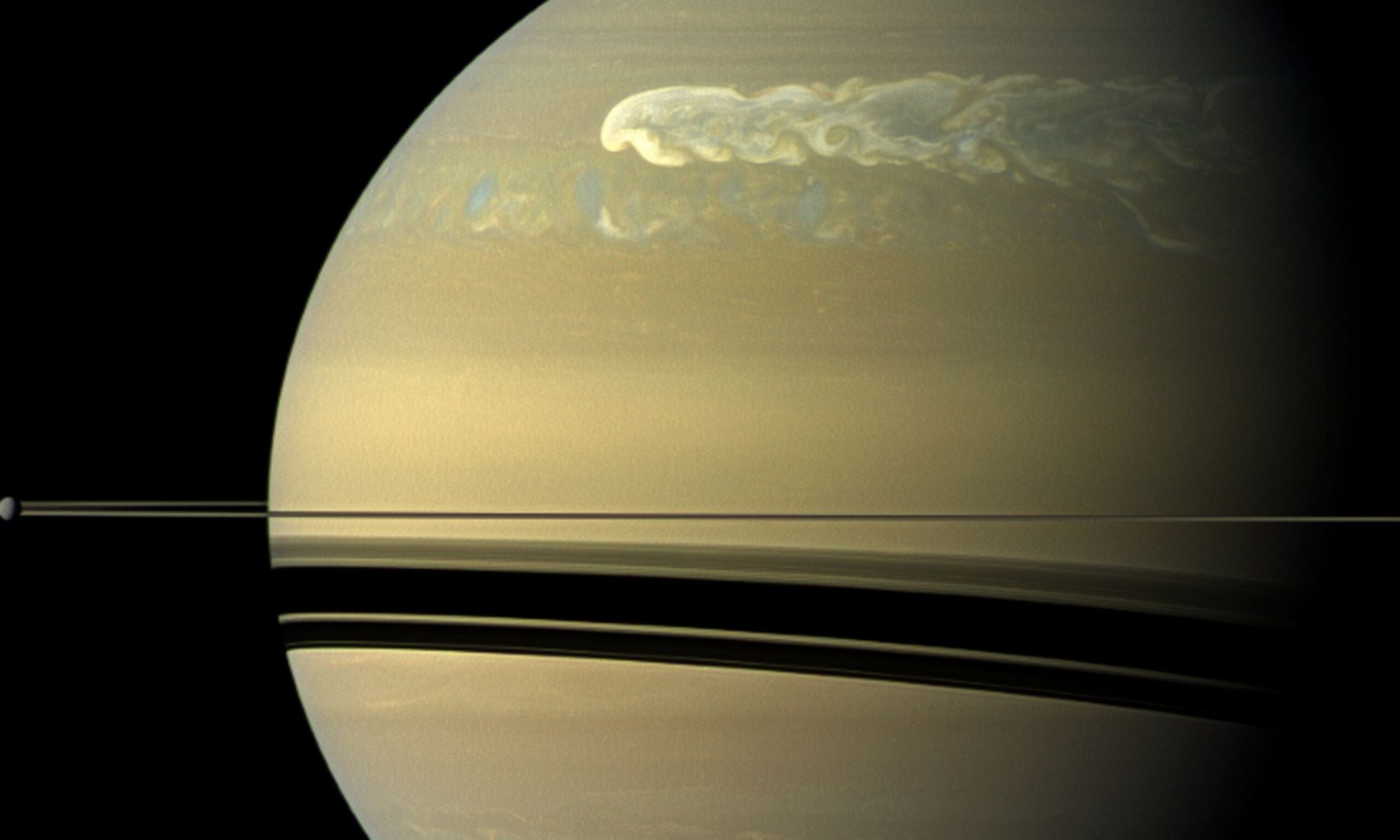The Great Red Spot of Jupiter is a storm that has raged for hundreds of years. It was first observed by Gian Domenico Cassini in 1665, and except for a period between 1713 to 1830, it has been observed continuously ever since. Even if Cassini’s storm is not the one we see today, the current red spot has been around for nearly two centuries. While great storms appear now and then on Saturn and other gas planets, they don’t have the staying power of Jupiter’s great storm. Or so we thought.
Jupiter’s spot is prominent because of its deep red coloring, which stands out against the planet’s pale coloring in visible light. We still don’t know the origin of its coloring, but we know the storm draws molecules up from deep in Jupiter’s atmosphere. Ultraviolet light interacting with these molecules could create reddish-brown tholins, such as we see within Titan’s atmosphere. Without its high-contrast appearance, we might not have discovered the red spot until more modern times.
Saturn also has great storms from time to time. The most recent appearance was during the Cassini–Huygens mission when a trail of white pierced Saturn’s atmosphere and was dubbed the Great White Spot. A similar spot was observed by the Hubble Space Telescope in 1994. Observations of white storms on Saturn have been recorded as far back as 1876. They were thought to be separate storms since they were observed at different latitudes. Storms appear every 20-30 years, and each storm lasts only a few years. But a new study published in Science Advances finds these storms last much longer than that.

Rather than observing Saturn in the visible spectrum, the team looked at radio observations captured by the Very Large Array. The upper atmosphere of Saturn is largely transparent to radio light, so it allows astronomers to see much deeper into Saturn’s atmosphere. The team found disruptions in deep layers of Saturn’s atmosphere, specifically through the abundance of ammonia, which is a key component of the Great White Spots. These disruptions occur at latitudes correlating with the appearance of past storms. This means Saturn’s periodic great storms stir the planet’s atmosphere for decades. The team even discovered a disruption band that doesn’t match known observations and is likely from a storm pre-dating the 1876 one. It seems the remnants of Saturn’s storms can linger for centuries.
Further observations will likely reveal clues about how these storms arise on Saturn. The next great storm could appear in a few years, and with radio astronomy, we should be able to observe how the deep layers of Saturn give rise to storms on the planet’s surface.
Reference: Li, Cheng, et al. “Long-lasting, deep effect of Saturn’s Giant Storms.” Science Advances 9.32 (2023): eadg9419.

